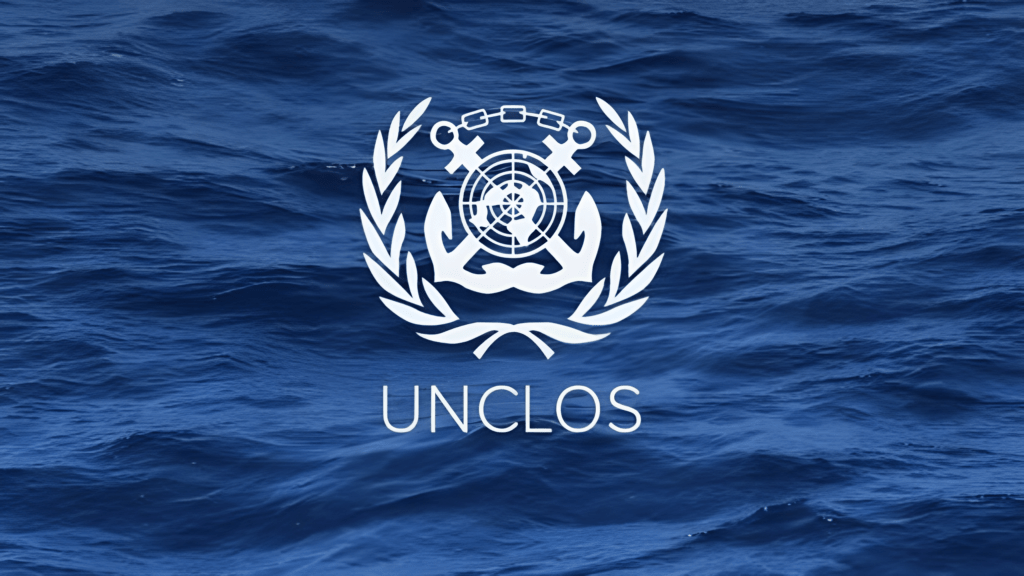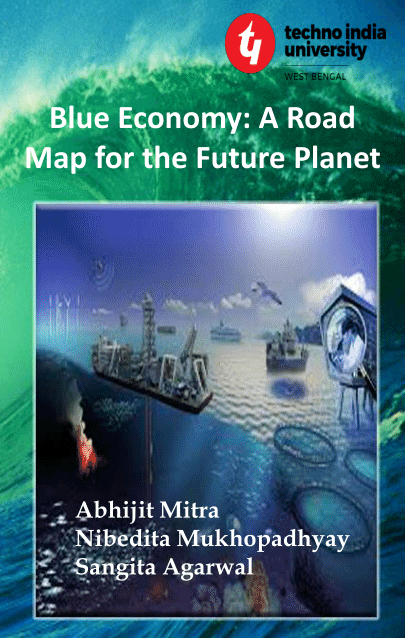Blue Economy A Road Map for the Future Planet” by Dr. Abhijit Mitra, Dr. Nibedita Mukhopadhyay and Dr. Sangita Agarwal. Published by New Millennium Graphics at Kolaghat, Purba Medinipur, West Bengal in August 2021
This book draws upon the authors’ extensive expertise in science and oceanography to explore the utilization of ocean resources within the framework of the Blue Economy. It is a must read for individuals engaged in marine science, economics and environmental sustainability as it presents solutions to address pressing concerns regarding degradation and economic progress.
“The report titled ‘Facts and Figures sheds light on the pressing challenges faced by our planet emphasizing the potential of the economy in addressing these issues. It presents the economy as an approach centered around marine based economic development with a core objective of enhancing well-being and promoting social equity all while mitigating environmental risks. According to the chapter embracing the economy can effectively turn these threats into opportunities.”
The earth’s marine ecosystem, covers about three-quarters of the planet with an average depth of 3.8 km and hosting diverse resources like fish, seaweeds, oil, and medicinal flora. It differentiates between oceans and seas based on geographical separations and explores the dynamic marine ecosystem, including benthic (substratum based) and pelagic (aquatic) zones, emphasizing their ecological and geological complexities.
The marine and estuarine ecosystems, highlighting the role of producer communities in converting solar energy into other forms of energy. It emphasizes that the highest primary production occurs along continental margins and shallow seas due to nutrient-rich continental run-off and sunlight penetration. The chapter also delves into the importance of phytoplankton and chemosynthetic bacteria in primary production, playing a critical role in the marine food web, especially near deep ocean ridges and vents.
The major mineral resources in the marine environment, including aggregates, placer deposits, phosphorite, evaporite deposits, polymetallic sulphides, nodules, ferromanganese crusts, hydrocarbons, and gas hydrates. It highlights the economic significance of marine placer deposits, which are concentrations of heavy metallic minerals, and discusses the availability and potential future offshore mining of phosphorite deposits, especially in regions far from onshore deposits.
The application of Artificial Intelligence (AI) in predicting future behavior based on current data sets, specifically focusing on the major threat of salinity fluctuation in marine and estuarine biodiversity, crucial for the blue economy. The chapter presents a case study from the Indian Sundarbans, using a nonlinear autoregressive model to analyze the trend of salinity levels over time, revealing a significant rise in salinity. This increase, attributed to reduced freshwater inflow and sea level rise, is shown to potentially affect the spawning and development of key marine species like the Indian shad Tenualosa ilisha.
The importance of international legal frameworks, such as the 1982 UN Convention on the Law of the Sea (UNCLOS) and the 1992 Biodiversity Convention is of great significance in the success of the Blue Economy. It highlights how these conventions and other global instruments, including the Ramsar Convention and the FAO Code of Conduct on Responsible Fisheries, are essential for the conservation and sustainability of marine biodiversity and associated environments, guiding the development of a sustainable Blue Economy.

It focuses upon the impact of human activities on the coastal and estuarine systems of West Bengal, highlighting the stress caused by tourism, shrimp farming, industrial operations, and fishing. It reveals a significant decrease in the levels of dissolved heavy metals (Zn, Cu, Pb) during the COVID-19 lockdown, indicating an improvement in aquatic health. The author emphasizes the potential of controlled human activities to positively influence water quality, especially concerning heavy metal contamination, underscoring its importance in the context of the blue economy.
The Blue Economy examines the impact of nutrient levels on marine and estuarine ecosystems in the Bay of Bengal, adjacent to the Indian Sundarbans. It highlights the crucial role of nitrate and phosphate in regulating phytoplankton diversity, which significantly contributes to the pharmaceutical sector by providing omega-3 and omega-6 fatty acids. The study also explores the dual sources of nutrient enrichment—natural processes and human activities like land run-off, erosion, sewage, and industrial waste—emphasizing their influence on primary and secondary marine production.
The impact of replacing traditional animal-based shrimp feed with floral ingredients in Indian Sundarbans’ aquaculture is also dwelt upon. It focuses on improving water quality, shrimp health, survival rates, and feed conversion ratio (FCR) through the use of seaweed-based feed, particularly Catenella repens. The study demonstrates the benefits of this approach in terms of better shrimp growth, higher astaxanthin levels, improved water quality, and greater economic profitability, indicating its sustainability and potential for enhancing the aquaculture sector in the region.
The heavy metal contamination in finfish and shellfish in the lower Ganga River, revealing significant variances in concentrations of zinc, copper, lead, and cadmium across species and locations. Emphasizing the significance of health concerns it underscores the necessity, for monitoring and stringent regulations especially in regions, with high levels of industrialization. The research showcases the role of managing human activities to safeguard marine life and human well-being against the detrimental impacts of heavy metal pollution.
The research focuses on the use of Porteresia coarctata, which’s a type of salt grass in the diets of Penaeus monodon (a species of shrimp). It highlights the fact that this grass contains levels of protein and astaxanthin; the study shows that incorporating Porteresia into the shrimp feed leads to improvements in shrimp growth, survival rate and feed conversion ratio. Additionally, it has effects on water quality in the culture ponds. These findings suggest that using Porteresia in shrimp feed can help improve both the health of the ponds and the economic efficiency of aquaculture practices. This presents a cost effective alternative, to feeds.
Coastal areas on the Indian Sundarbans are at risk from climate change. This has implications for rising sea levels, land loss and changes in storms at sea. The focus of this study is on the delta region of the Sundarbans, famous for its mangrove plants and animals. The research highlights how biodiversity might be affected by changes in factors like salinity dissolved oxygen levels and erosion rates due to warming and its impact, on estuaries.

“The book titled ‘Blue Economy; A Road Map, for the Future Planet’ offers a nuanced exploration of the concept of the economy effectively merging environmental sustainability with economic strategies. It thoroughly examines aspects of marine and estuarine ecosystems covering topics such as the impact of levels on biodiversity the importance of aquatic health in economic planning and how climate change affects coastal areas. The inclusion of data and case studies from the Indian Sundarbans region enriches the discussion on sustainable management of marine resources. However, it’s worth noting that the book primarily focuses on the context and may not fully encompass all aspects of the blue economy.
The books methodology, which involves data collection and analysis may present a challenge for readers who’re not specialists in the field due to its technical nature. To make the book more applicable to an audience it would be beneficial to include a wider range of global case studies and perspectives. Additionally incorporating approaches that involve policy analysis, economics and social sciences could provide a holistic understanding of the blue economy. This approach would not increase the book’s appeal. Also contribute significantly to global discussions, on sustainable development and the management of marine resources.





